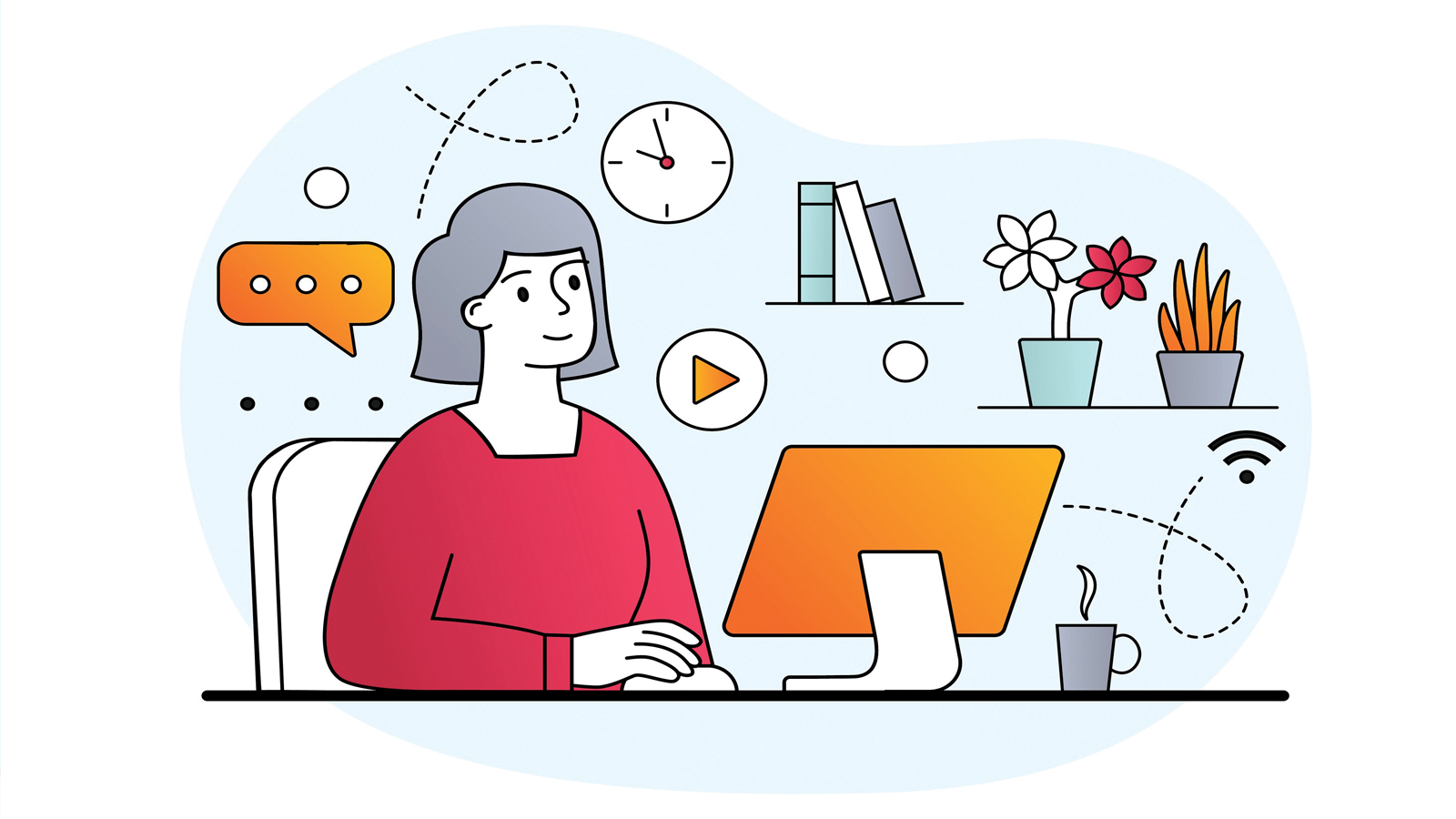Ever find there are more things to do than there is time in the day? It’s not uncommon. As a former co-caregiver there was always something that needed my attention. From driving Mom or Dad to appointments, a quick prescription refill from the pharmacy, running a household errand on my lunch break, it was never ending.
Initially, I believed I could accomplish everything independently (and felt this was my obligation) however, with only so many hours in a day it became increasingly stressful. The good news? I discovered a better way to cope using time management techniques. While I found there was no one-size-fits-all formula there are a number of easy and practical strategies you can try:
1) Avoid multitasking – You may have witnessed a driver trying to hold a cell phone in one hand and the steering wheel in the other. That driver is trying to do more than what is realistically possible and posing a safety risk to himself and others. Caregivers can also have false expectations of themselves and what they can sensibly do. One important lesson I learned was that when I tried to accomplish too much, I got less done and became exhausted. Juggling tasks were possible but resulted in poor outcomes. To avoid falling into this trap, focus on a) the most important issues first…what needs doing now b) what can be deferred or done later c) what can be delegated to someone else to look after d) discarded and dropped off the list as not vital right now?
2) Schedule your time –We don’t always realize how much time it can take to help and/or support a loved one. For a clearer visual, try writing down what you do each day and how much time each task took (e.g., picking up Mom/Dad for a doctor’s appointment, ensuring they are ready to go, driving to the doctor’s office, waiting at the clinic, and driving back home again). Recording this data can give your family a far better grasp on how much time is really spent on everyday tasks, how much it varies and what’s falling through the cracks.
3) Delegate tasks – Ask for and specifically arrange for tasks to be done by another family member, a friend, a volunteer from a senior’s driving service, Meals on Wheels, a government homecare provider or caregiving company. You can also arrange for snow clearing, gardening, grocery and drug store deliveries as well as home maintenance and cleaning services.
4) Make a list – Listing daily tasks helped to keep me on-track. Back then, I wrote my lists in my care-giving journal, but today I’d use a caregiving app. (see sidebar) Lists need to be short (fewer smaller goals will be far easier to achieve than many larger goals), prioritized, and allow for flexibility. When listing, remember Murphy’s Law (anything that can go wrong will go wrong) so try to go with the flow and move on if things go sideways as they are prone to do.
5) Set time limits and priorities – Tracking time and reducing distractions becomes easier when you have a deadline. Consider the importance of each item and tackle big tasks earlier in the day when you’re more energized. Set reminders when you’re waiting for an answer/test result/appointment time rather than trying to carry everything in your head.
6) Say “No” – Don’t mistakenly agree to tackle everything on your own, even if you’re the best one for the job. Say no politely and offer a solution or suggestion if you can. An added explanation may be helpful for others to better understand your reluctance to take on more.
7) Decrease interruptions – Each time someone taps on a caregiver’s shoulder, it disrupts their thoughts or action process. Send the kids outside to play, close Facebook or put a “Do Not Disturb” sign on the home office door. I also found that turning off my cell phone when I was in the house with my parents was an effective strategy that stopped interruptions and helped me make the most of my time with them.
8) Avoid leaving work on the table – I remember the family’s delays with Dad’s Guardianship and Trusteeship application process. My older sister initially started the paperwork, passed it on to my younger sister, who then asked me to complete it. Granted, this paperwork was somewhat daunting, but the job needed doing and may have taken less time and stress if we had properly assigned the task and got on with it.
With some simple business based time management ideas put into practice, I believe family caregivers can feel better, become more effective, and have more time on their hands. So list up, delegate and get ready for just a little more peace of mind.
Rick Lauber is a published book author and an established freelance writer. Lauber has written two books, Caregiver’s Guide for Canadians and The Successful Caregiver’s Guide (Self-Counsel Press). Visit www.ricklauber.com.
There’s an app for that
Organization focused apps can help you safely and effectively manage your most precious resource–time. Stay on top of caregiving responsibilities like medications, doctors appointments, physiotherapy and even meal planning and shopping. Download a couple and see what might work best for you.
CareZone: Perhaps the most comprehensive caregiving app out there, CareZone not only allows you to keep track of important documentation, but you can even upload to it for easy access on the go. Add medications by simply taking photos of the prescription bottle labels! Additionally, CareZone Pharmacy services offer free pill packaging and arranges for auto-refills. And yes, it includes medication reminders, too. Another thing that sets CareZone apart is its ability to store/track health information including mood, weight, sleep, pain, and blood pressure and glucose levels.
This app also lets you keep personal health information such as allergies, insurance cards, and ID cards, plus files like advanced directives and power of attorney all in one safe and secure place. It also has a place to keep contact information for doctors, family members, insurance providers, and pharmacies.
Like many of the other care apps, CareZone lets caregivers coordinate schedules through a shareable calendar, which is easily synced with other calendars. This user-friendly app also has a “To-Do” section where you can keep a list of tasks and assign tasks to others. The journal feature lets you keep notes on health issues/symptoms, health care instructions, medical appointments, and more. However, there is no search capability within the journal and notes sections. Another thing that makes CareZone unique is the curated news feed which provides relevant information about your loved one’s illness, disability, or condition.
Carely: This a free social network-type app that’s perfect for those who are trying to tag-team caregiving. It allows individuals to communicate easily, coordinate caregiver tasks and even organize and track activities and appointments via a shared calendar. Like a social network, you can also use it to share family photos. Use Carely’s messaging feature to reach out to your care network. For instance, you can ask, “Is anyone available to watch Dad on Friday night?”. Keep everyone on the same page with the Visit Report feature, which allows you to check off tasks such as giving medication, household chores, hygiene, and filling prescriptions.
Carefolk: Designed by family caregivers for family caregivers, this app gives you the tools you need to reduce stress and avoid burnout. Sign up for a Carefolk Family account to access the toolkit, which includes a family calendar and organizer, care planning and coordination, and medication and appointment reminders. The chat feature that lets you message other caregivers, privately or in a group. This network offers support groups, peer-to-peer support, and helpful tips and information.
Caring: Created by professional care managers, the Caring app helps you prepare and plan, which gives you a sense of control so you feel less stressed. Keep handy info like emergency contacts, a loved one’s medical history and medication list all together. It also has a shareable scheduling feature, report sharing, and reminder notifications or emails. You can even make notes at the doctor’s office and instantly share them. This app also has a time tracker.
One thing that sets this app apart from the rest is its fully encrypted personal affairs planner, which lets you note where important documents are located as well as track income and expenses. You can even document important care decisions for future reference. Caring also offers guidance and tips for concerned caregivers.
Try before you buy: Use the Caring app for free with limited access, then sign up for a subscription if you like what you see. Others on your care team won’t have to subscribe, you can give them “view only” or “full access” for free.
Carer: This convenient app is designed for patients with chronic illnesses and elderly caregivers. While the Carer app has similar features to the others, it’s in a league of its own with its hiring feature, which allows you to find qualified local nurses and trained caregivers for medical escort, homecare, and nursing.
CaringBridge: Sharing is caring! CaringBridge lets you set up your own website to keep people updated on your loved one’s condition in one centralized, secure place. You don’t have to contact everyone individually and can focus on more pressing matters.
Since they’ve partnered with GoFundMe, CaringBridge can even be used for fundraising, which is great for those who need help with medical bills or caregiving costs. Users must be invited to view the private website. Once there, friends and family can post encouragement and inspiration from afar.
CaringBridge’s planner/calendar feature keeps track of appointments and tasks like the rest of the apps on this list, but it also allows you to request assistance and assign tasks to others, plus you can put the address of the appointment and click “add to calendar” to see it on your device’s default calendar.













